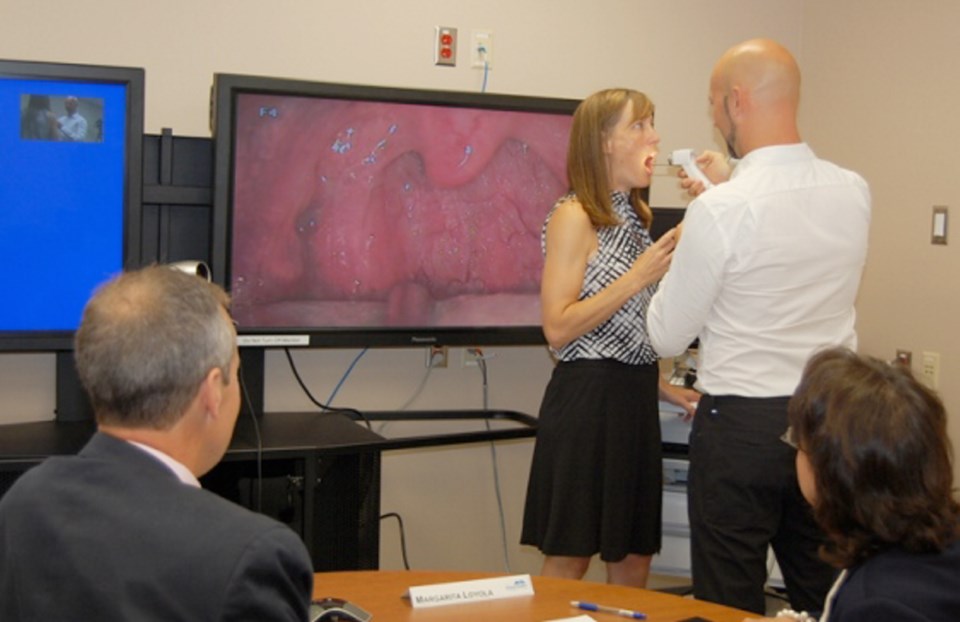Health-care professionals celebrated a major milestone in a new way to deliver care to patients in remote communities.
On Tuesday, doctors and support workers in Nanaimo shared a teleconference with peers in Victoria and Port Hardy to mark the 10,000th telehealth consultation on Vancouver Island.
Telehealth is technology that connects doctors with patients remotely. High-speed internet delivers audio, video and images using cameras, microphones, speakers and sensing devices linked through computers.
Port Hardy resident Joseph Lefort was invited to the teleconference to share his experiences trading in a 782-kilometre round trip to see a Nanaimo specialist with a 10-minute trip to a telehealth room at Port Hardy Hospital.
“This is fantastic,” Lefort said. “It’s the same as being in the (specialist’s) room in Nanaimo, except it’s a couple hundred miles closer.”
The comment drew laughter from viewers at opposite ends of the Island, but the technology offers serious benefits for patients.
The first telehealth sessions took place in 2007 and it has grown into a highly used service.
Early trials were conducted from the Royal Jubilee Hospital in Victoria, and “we saw about 100, when we did this trial, and now we’re setting to do our 10,000th, which makes the first 100 seem pretty puny, so we want to celebrate this,” said Dr. Brian Weinerman, oncologist with the B.C. Cancer Agency’s Vancouver Island Centre in Victoria.
To mark the occasion, certificates were presented to key people involved with the project at all three Vancouver Island sites. Patients are the benefactors of the program.
Besides oncology, the program is used in thoracic medicine, mental health treatment, renal work and cardiology, to name just a few areas.
Medical professionals recently added a new tool to their arsenal that allows them to better examine patients remotely: An electronic stethoscope that plugs into a computer’s USB port so doctors can remotely listen to a patient’s vital signs, such as heart and breathing.
“First and foremost we have enabled patients to see healthcare providers in their homes,” said Margarita Loyola, Vancouver Island Health Authority telehealth group head.
“This means more than 3.7 million kilometres of travel to appointments saved, the equivalent of 87 trips around the world.”
That equates to a reduction of more than 1.3 million tonnes of greenhouse gas emissions.
The technology is ideal to serve isolated Island communities, and that will only increase.
“I see this as an under-utilized, increasingly important resource,” said Dr. Anthony Booth, a Nanaimo doctor who uses it to see kidney patients.



